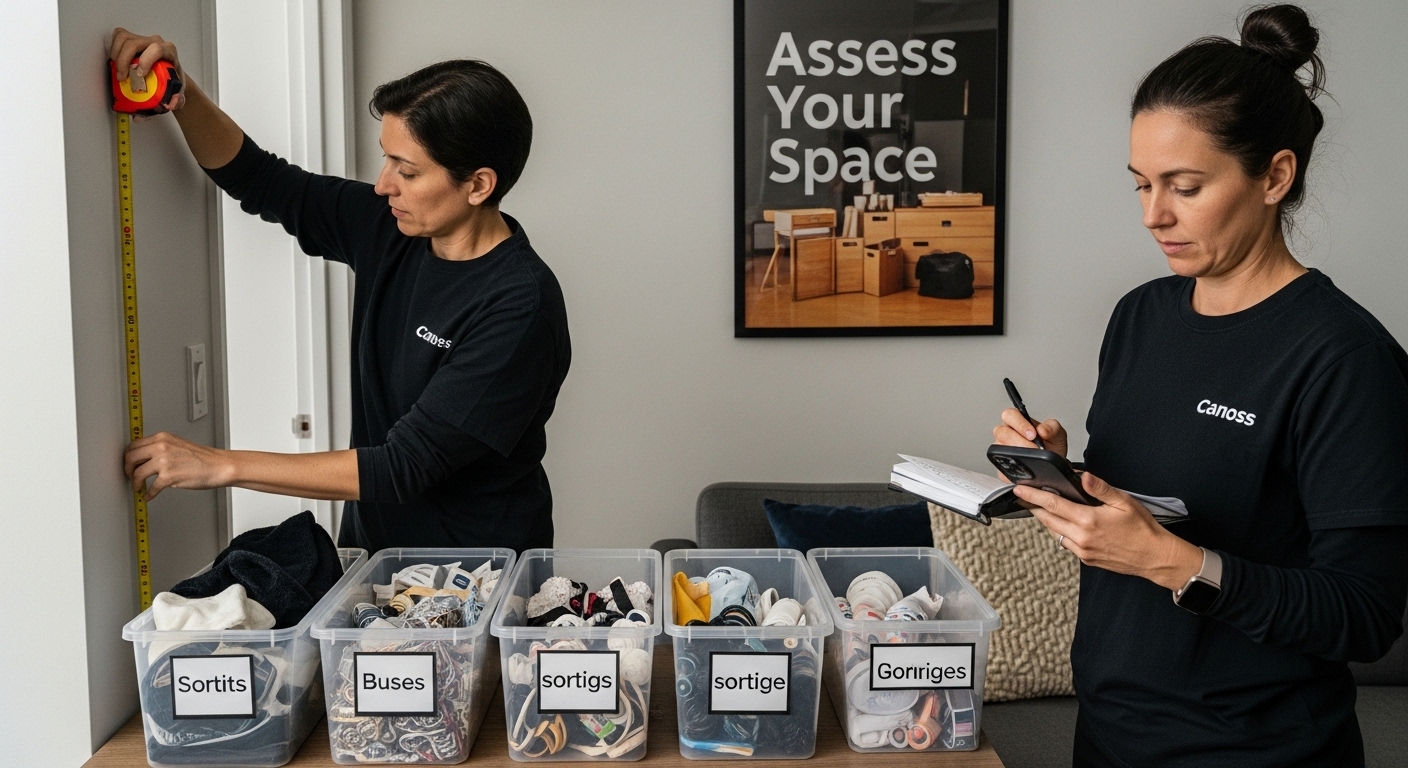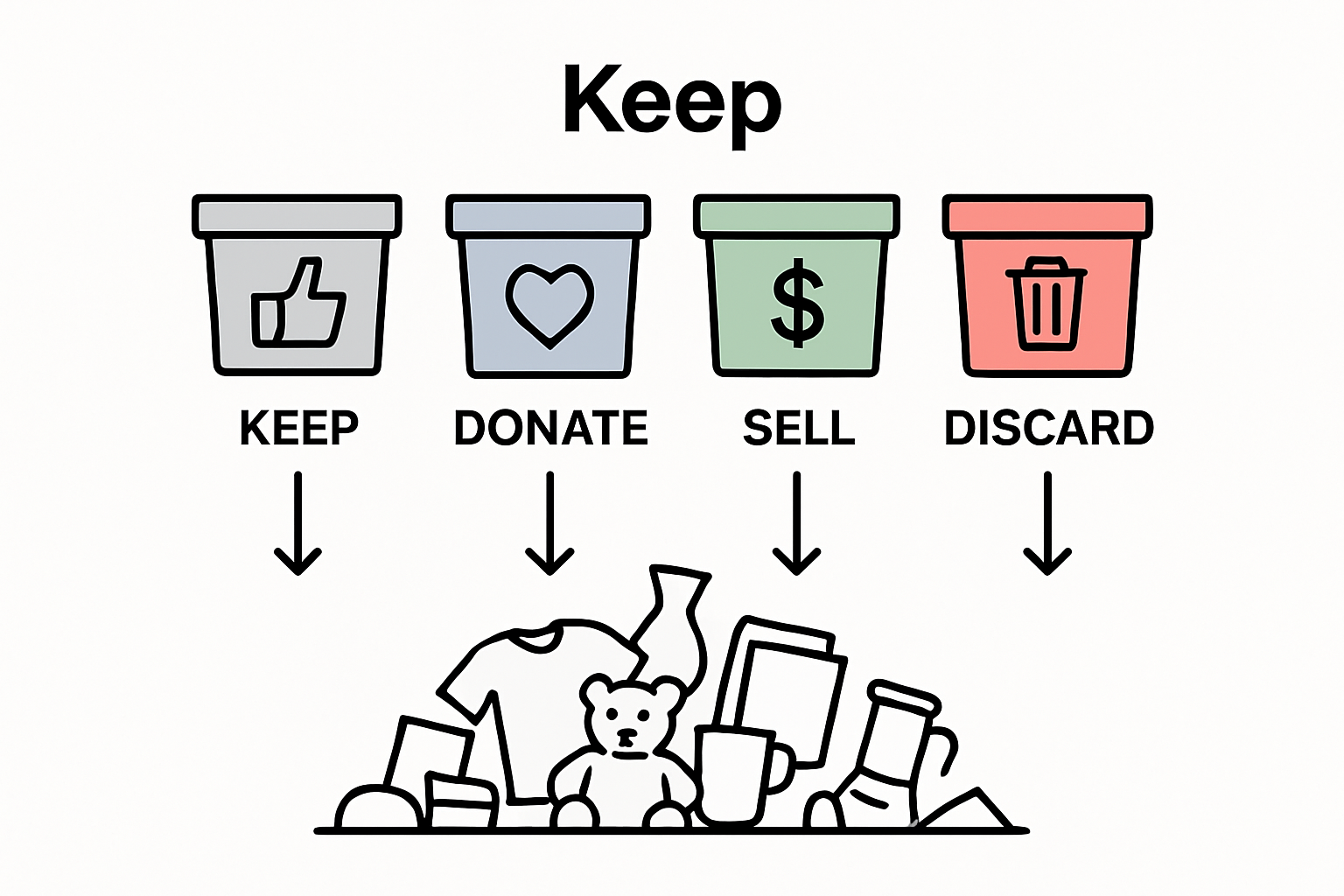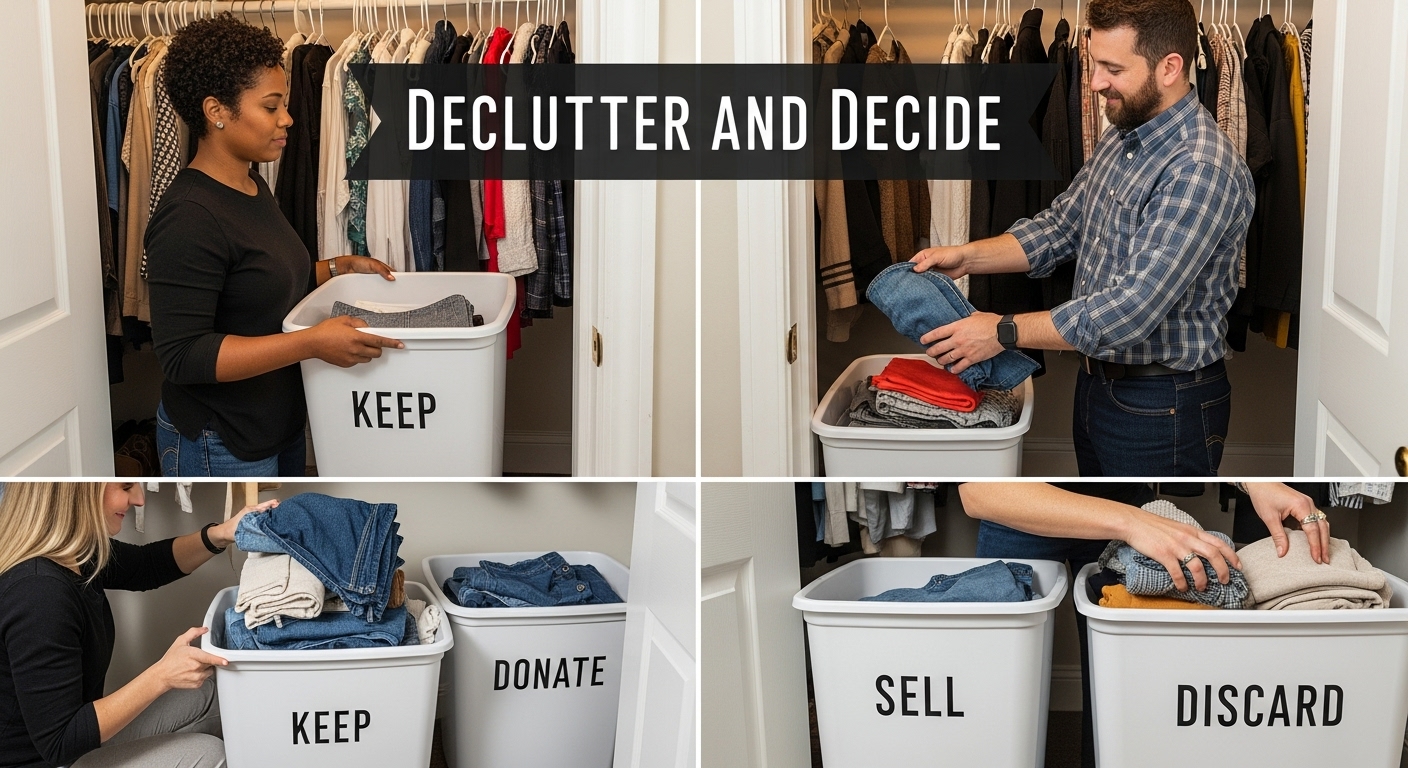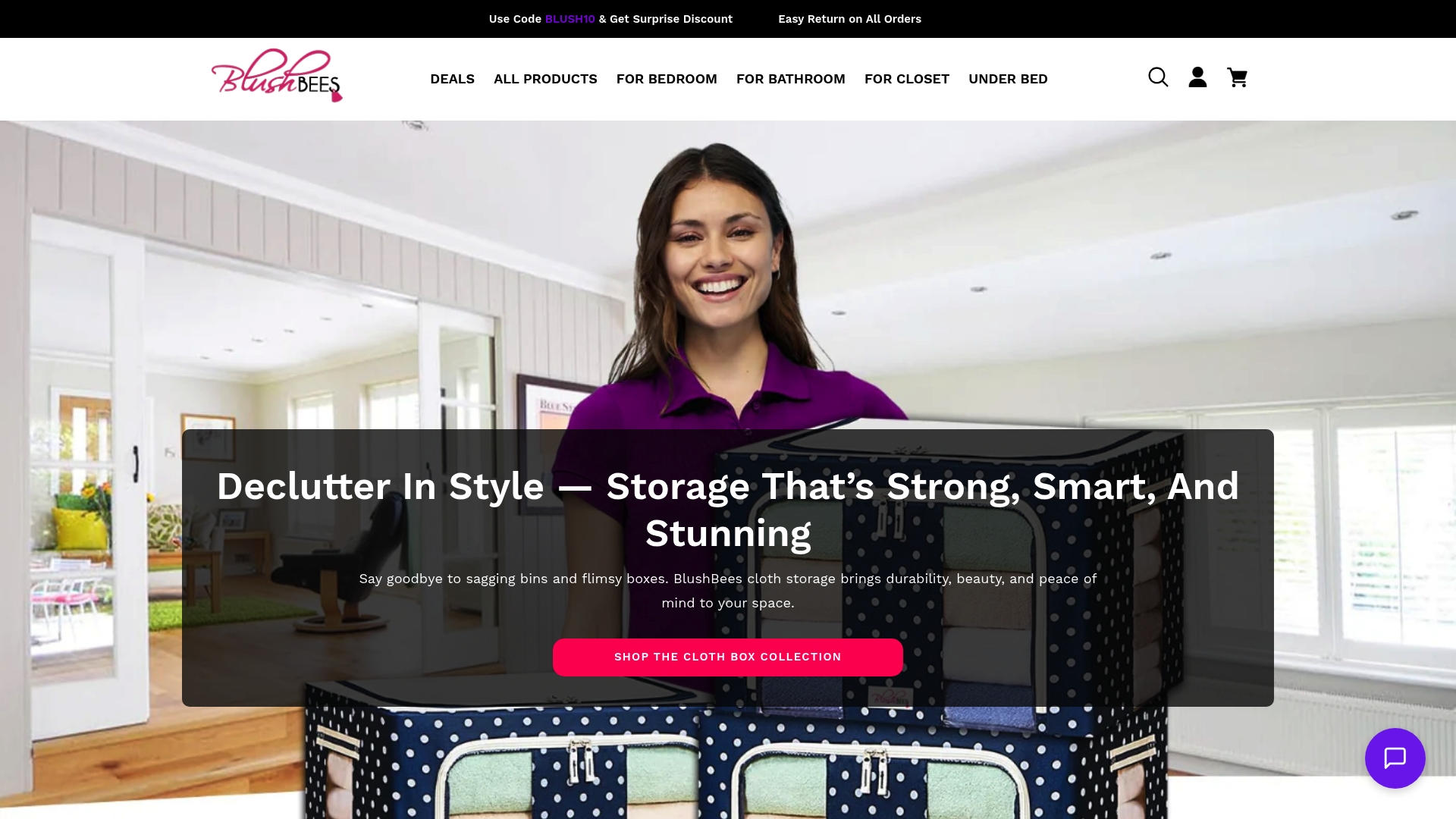

Struggling to fit your life into a small space can feel impossible, especially when clutter keeps taking over. Yet, more than one third of Americans say they feel overwhelmed by the amount of stuff in their homes. Most people think the only answer is dramatic downsizing. Surprisingly, the real fix is a smarter way to organize what you already own. Check out how a few simple steps can completely transform even the tiniest living area into a calm, efficient oasis.
Table of Contents
- Step 1: Assess Your Current Space And Needs
- Step 2: Declutter And Decide What To Keep
- Step 3: Choose Smart Storage Solutions
- Step 4: Organize And Arrange Items Effectively
- Step 5: Finalize Your Organization System And Maintain It
Quick Summary
| Key Point | Explanation |
|---|---|
| 1. Assess your space and needs | Evaluate your rooms with a measuring tape to understand both potential and limitations for organization. |
| 2. Declutter by creating sorting zones | Use categories like keep, donate, sell, and discard for systematic decluttering, focusing on emotional and practical value. |
| 3. Choose smart vertical storage solutions | Utilize wall space with shelves and multi-functional furniture to maximize storage and maintain an aesthetically pleasing environment. |
| 4. Organize items by frequency of use | Group similar items and place frequently used ones within easy reach to simplify daily access and reduce clutter. |
| 5. Establish a maintenance routine | Dedicate 10-15 minutes daily for upkeep, reassessing every three months to ensure your organization system remains effective. |
Step 1: Assess Your Current Space and Needs
Successful small space organization begins with a comprehensive assessment of your current living environment. This crucial first step transforms cluttered areas into efficient, functional spaces by understanding exactly what you have and what you truly need. Before purchasing storage solutions or reorganizing, you must develop a clear picture of your space’s potential and limitations.
Start by walking through each room with a critical eye and a measuring tape. Identify areas where clutter accumulates most frequently. These are typically surfaces like kitchen counters, bedroom dressers, home office desks, and living room side tables. Take detailed measurements of available spaces, noting dimensions for potential storage solutions. Pay special attention to vertical spaces such as wall areas, the insides of closet doors, and unused corners that can be transformed into smart storage zones.
Next, conduct a thorough inventory of your belongings. This process involves more than just counting items it requires honest evaluation of what you actually use. Sort items into three primary categories: essential items you use regularly, occasional items with genuine utility, and objects that no longer serve a purpose in your life. This strategic sorting helps you understand not just the quantity of your possessions but their functional value.
While performing your assessment, create a simple tracking system. Use a notebook or digital spreadsheet to document your findings. Record room dimensions, problematic storage areas, and an initial inventory of items. This documentation becomes your blueprint for targeted organization. Read our guide on stylish home organization for additional insights into creating an efficient living space.
As you complete this assessment, look for patterns in your current storage challenges. Do you struggle with clothing storage? Are kitchen utensils constantly scattered? Understanding these specific pain points allows you to develop tailored solutions in subsequent organization steps. Remember, effective small space organization is not about having less but about creating smarter, more intentional storage strategies that maximize every square inch of your living environment.
Step 2: Declutter and Decide What to Keep
Decluttering is the transformative process that separates successful small space organization from mere shuffling of items. This step requires emotional courage, strategic thinking, and a commitment to creating a more functional living environment. Your goal is not to eliminate everything but to curate a collection of items that genuinely enhance your daily life.
Begin the decluttering process by creating sorting zones in a central area. Establish four primary categories: keep, donate, sell, and discard. Use large, clearly labeled containers or designated floor spaces for each category.
 This visual separation helps prevent emotional decision fatigue and provides a structured approach to sorting. Approach each item with a critical question: “Have I used this in the past year, and does it truly add value to my life?”
This visual separation helps prevent emotional decision fatigue and provides a structured approach to sorting. Approach each item with a critical question: “Have I used this in the past year, and does it truly add value to my life?”
Evaluate sentimental items with particular care. These objects often create the most significant emotional resistance to decluttering. Develop a nuanced strategy for managing memorabilia by taking photographs of items with special memories, keeping a few select pieces that genuinely spark joy, and releasing the rest. Learn more about managing sentimental items to help navigate this challenging aspect of organization.
As you sort, be ruthlessly honest about item utility. Clothing with tags still attached, kitchen gadgets used once a year, and duplicate tools are prime candidates for removal. Create a one-year rule: if an item has not been used in twelve months and does not hold significant sentimental or practical value, it should be considered for removal. Digital decluttering is equally important tackle electronic files, emails, and digital storage with the same systematic approach.
Once sorting is complete, immediately process your designated categories. Donate usable items to local charities, sell valuable pieces through online platforms, and responsibly dispose of items that cannot be reused. This swift action prevents reimagining or second-guessing your decisions. The verification of successful decluttering is simple: your remaining items should fit comfortably in your designated storage spaces, with room to breathe and expand.
 Each kept item should serve a clear purpose or bring genuine happiness, setting the stage for more efficient organization in subsequent steps.
Each kept item should serve a clear purpose or bring genuine happiness, setting the stage for more efficient organization in subsequent steps.
Step 3: Choose Smart Storage Solutions
Choosing smart storage solutions transforms your decluttered space from potential chaos into a functional, aesthetically pleasing environment. This critical step moves beyond simple containment and focuses on selecting storage options that maximize efficiency, complement your living space, and adapt to your specific organizational needs.
Vertical space is your secret weapon in small space organization.
Look beyond traditional horizontal storage and explore wall-mounted shelves, over-the-door organizers, and magnetic strips that convert empty wall areas into powerful storage zones. Invest in multi-functional furniture pieces that integrate storage seamlessly. Ottoman with interior storage, beds with built-in drawers, and coffee tables featuring hidden compartments provide elegant solutions that serve dual purposes without compromising style. Explore our shelf organization ideas to discover innovative ways of maximizing your living space.
When selecting storage containers, prioritize clear, stackable options with uniform sizes. Transparent containers allow quick visual identification of contents, reducing time spent searching and maintaining organization. Choose containers with tight-fitting lids that protect items from dust and moisture. Modular systems that can be reconfigured offer flexibility as your storage needs evolve. Consider materials carefully lightweight plastic works well for craft supplies, while sturdy canvas bins suit heavier household items.
Create dedicated zones for different categories of items to maintain long-term organization. A command center near your entryway can house keys, mail, and daily essentials. Kitchen drawers benefit from adjustable dividers that create designated spaces for utensils, cooking tools, and pantry items. Bedroom closets become more efficient with specialized hangers, shelf dividers, and hanging organizers that maximize vertical storage potential.
The ultimate verification of successful storage solution selection is simplicity and accessibility. Your new storage system should make retrieving and returning items intuitive and effortless. If you find yourself struggling to maintain the organization or frequently bypassing your carefully designed storage, it is time to reassess and adjust. Smart storage is not about perfection but about creating a system that naturally supports your lifestyle and reduces daily stress.
Step 4: Organize and Arrange Items Effectively
Organizing and arranging items effectively transforms your decluttered space from a collection of containers into a seamless, functional environment. This step is about creating intuitive systems that make daily life smoother and reduce the mental load of maintaining an organized home. The key is establishing logical placement that supports your natural habits and lifestyle.
Begin by grouping similar items together, creating zones that reflect how you actually use your space. In the kitchen, arrange cooking utensils near the stove, place baking supplies together, and keep frequently used items at eye level. Bathroom organization works best when daily essentials are within immediate reach, while less frequently used items can be stored in lower or higher cabinets. Check out our guide on keeping organized with stylish solutions to refine your approach to item arrangement.
Implement a strategic labeling system that goes beyond simple identification. Use clear, consistent labels that not only name the contents but also provide additional context. For instance, instead of just writing “Documents,” specify “Tax Documents 2024” or “Medical Receipts.” This approach saves time and prevents confusion, especially in shared living spaces. Color-coding can add an extra layer of organization, allowing for quick visual identification of different categories.
Consider the frequency of use when arranging items. Create a hierarchy of accessibility where most-used items occupy prime real estate in your storage solutions. This might mean keeping work tools at the front of a drawer, placing everyday dishes in the most convenient kitchen cabinet, or positioning frequently worn clothing at the front of your closet. The goal is to minimize the effort required to access items you need daily.
Verify the effectiveness of your organization by conducting a simple usability test. Spend a week living with your new system and ask yourself these questions: Can you find items quickly? Do you naturally return things to their designated spaces? Are there any friction points that make organization feel like a chore? Successful organization feels effortless. If you find yourself consistently fighting against your organizational system, it is time to make adjustments. The ultimate measure of effective organization is not perfection, but a system that naturally supports your lifestyle and reduces daily stress.
Step 5: Finalize Your Organization System and Maintain It
Maintaining your newly organized space requires more than initial effort it demands a sustainable system that evolves with your lifestyle. Consistency is the cornerstone of long-term organization, transforming your carefully crafted storage solutions from a one-time project into a daily habit that supports your overall quality of life.
Establish a daily maintenance routine that takes no more than 10-15 minutes. This short investment prevents small messes from becoming overwhelming organizational challenges. Create a quick evening sweep where you return items to their designated spaces, wipe down surfaces, and do a rapid assessment of your storage zones. The goal is not perfection but consistent, minimal effort that keeps your space functioning smoothly. Explore our daily declutter checklist to streamline your maintenance approach.
Implement a quarterly review system to reassess and adjust your organizational strategy. Every three months, conduct a comprehensive evaluation of your storage solutions. Ask critical questions: Are your current systems still working? Have your lifestyle or needs changed? Are there areas experiencing persistent clutter? Be willing to modify your approach, relocate containers, or redesign zones that are not serving their intended purpose. This adaptive strategy prevents organizational systems from becoming rigid and ineffective.
Develop accountability mechanisms that make maintenance feel less like a chore and more like a natural part of your routine. Consider using a habit-tracking app, creating a simple checklist, or even setting up small rewards for maintaining your organizational system. Some people find success in making organization a social activity, scheduling monthly organization check-ins with a friend or family member who can provide external motivation and perspective.
The ultimate verification of a successful maintenance strategy is a sense of calm and control in your living space. Your home should feel like a supportive environment that reduces stress rather than creating additional mental load.
Here is a checklist table to help you verify that your space remains organized and your system is effective over time.
| Verification Step | What to Check | Frequency | Recommended Action |
|---|---|---|---|
| Daily Upkeep | Items returned to designated spots | Daily | 10-15 minute evening reset |
| Surface Tidiness | Counters, tables, and visible areas clear | Daily | Wipe down and clear surfaces |
| Storage Fit | Items fit in bins without overflow | Quarterly | Adjust or remove excess items |
| Accessibility | Common-use items easy to reach | Quarterly | Relocate as routines change |
| System Adjustment | Organizational system still matches lifestyle | Quarterly | Update containers or zones as needed |
| Emotional Response | Space feels calm and manageable | Ongoing | Simplify further if stress occurs |
| If you find yourself consistently struggling to maintain the system, it is a signal to simplify further. Remember that small, consistent actions are more powerful than sporadic, intense organizational efforts. Your goal is not a showroom-perfect space, but a functional, comfortable home that adapts to your evolving life. |
Take Control of Small Spaces with Beautiful Organization Solutions
Are you tired of clutter building up in your home and feeling like there is never enough space? As you learned in our article on small space organization strategies, the key is using smart storage to transform every inch of your home. Whether you struggle with overflowing closets, chaotic bedrooms, or kitchen counters taken over by daily essentials, finding the right solutions will help create a calm and welcoming space.
The following table summarizes each main step in the small space organization process, including the objective, key action, and outcome for easy reference.
| Step | Objective | Key Action | Outcome |
|---|---|---|---|
| Assess Space & Needs | Understand space and possessions | Take inventory, measure, document zones | Identify strengths and focus areas |
| Declutter & Decide | Curate valuable, needed possessions | Sort into keep, donate, sell, discard | Retain only useful or meaningful items |
| Select Storage Solutions | Maximize efficiency and accessibility | Choose vertical/multi-functional storage, clear bins | Easy-to-use, tailored storage systems |
| Organize & Arrange | Create intuitive, logical systems | Group similar items, label, prioritize access | Smooth daily routines, reduced clutter |
| Maintain System | Sustain organization long-term | Daily upkeep, quarterly review, adjust as needed | Consistently tidy, adaptable home |
| Explore options that make the most of your bedroom with our carefully designed Bedroom Storage products, perfect for keeping your essentials tidy and accessible. |

Why let disorder take over your life when the right tools can make organization easy and even enjoyable? Discover durable, stylish solutions at BLUSHBEES USA and see how our Kitchen Storage or Undergarment Storage products bring instant order to even the smallest spaces. Shop today to turn your home into a place that supports your goals and reduces stress. Start organizing now and feel the difference every day.
Frequently Asked Questions
How do I assess my space before organizing?
Start by walking through each room with a measuring tape, noting areas where clutter accumulates. Create a detailed inventory of your belongings and document room dimensions to understand your space’s potential and limitations.
What are some effective strategies for decluttering?
Create four sorting categories: keep, donate, sell, and discard. Assess each item critically by asking if it has been used in the past year or if it adds value to your life. Photograph sentimental items and limit the number of pieces you keep to preserve meaningful memories without the clutter.
What types of storage solutions work best for small spaces?
Utilize vertical space with wall-mounted shelves and multi-functional furniture, like ottomans with storage. Clear, stackable containers maximize efficiency, and modular systems offer flexibility for evolving needs. Choose storage solutions that make retrieving and organizing items simple and intuitive.
How can I maintain my organized space in the long term?
Establish a daily maintenance routine that requires only 10-15 minutes to return items to their designated spaces. Conduct a quarterly review of your storage systems to assess their effectiveness and adjust based on any changes in your lifestyle or needs.



